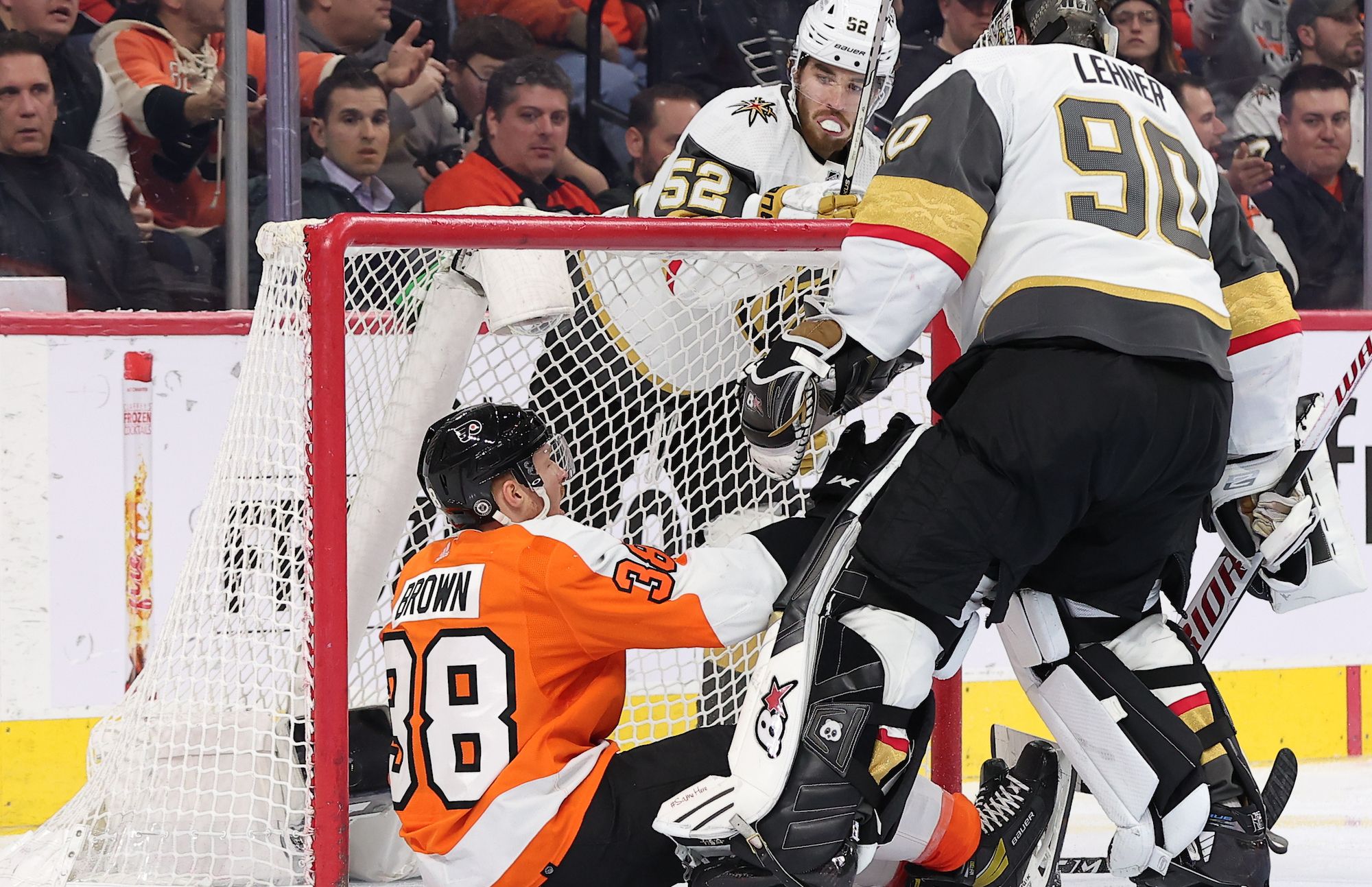The Stanley Cup Final is over, and the Las Vegas Golden Knights are the new champions after defeating the Florida Panthers in a five game series. Vegas made good on their promise at inception: a Stanley Cup in six years. They’ve been involved in some major trades, free agency signings, and cap gymnastics to construct their championship roster, and in the wake of their victory, many will try to replicate the Vegas model for success.
However, not every team is in a position to approach winning the way Vegas does–the Flyers among them. We previously covered lessons the Flyers could learn from Vegas and Florida, and today we’re looking at lessons they shouldn’t learn from how the SCF played out.
“Big defensemen are the only way to win”
A lot is being made about how the Cup was won by the Vegas blue line: big, beefy defensemen stealing the series. Don’t be fooled, though: all of Alex Pietrangelo, Shea Theodore, Alec Martinez, and the rest of the Vegas defenders are highly skilled players. The fact that they’re all over six feet and hovering around 200 pounds is a bonus, not the fundamental reason they’re good; a defensive core of Rasmus Ristolainens, for example, would not have gotten Vegas a ring.
This could end up playing into the favor of the Flyers. With attention suddenly back on the importance of large defensemen running the backend, GM Danny Briere may actually find someone willing to take on Ristolainen for a Cup run. The trap, however, is that the Flyers fall into the same old roster building mistake: size over skill. PoHO Keith Jones has often expressed his love for Risto’s game, and that the team will need to be rebuilt from the blue line out–there’s a risk the Flyers front office sees this Vegas victory as a reason to double down on large defensemen. Hopefully, this isn’t their key takeaway from the result of the Final.
“Strong depth is all you need”
The Golden Knights had one of the deepest rosters in the playoffs this year, and it absolutely contributed to their eventual championship. However, they had a forward group led by Mark Stone (with a hat trick in game five!), Jack Eichel, Jonathan Marchessault, William Karlsson, and a number of other bonafide top-six talents. We’ve already discussed their blue line corps, but Pietrangelo and Martinez are excellent, top-line defensemen. Yes, Vegas saw contributions from their third and fourth lines, and their third defensive pair stood strong, but those elite talents at the top of the lineup led the charge.
Depth is important, and getting goals from up and down the lineup is crucial to playoff success–but you can’t neglect the impact of star power at the top. It’s been said again and again, but the biggest thing the Flyers lack is elite players that can take over a game. The team has pretty solid depth at forward as it is, but they need that extra oomph. For what it’s worth, I truly believe one or two high-end talents would solidify a playoff contending forward corps (let’s not talk about the defense).
It’s important to mention that the Seattle Kraken may be in a position to prove us all wrong about “depth alone doesn’t win Cups,” but it’s still a bit early to tell. If that approach does prove successful, the Flyers may be a bit closer than we all think.
Are the long term injury effects worth it?
Hockey players are known to play through obscene injuries, sometimes to lasting detriment–just look at the Colorado Avalanche’s Gabriel Landeskog, who played through injuries in last year’s Cup run, and will miss two full seasons as a result. By the end, the Panthers were, to put it bluntly, beat to shit. Matthew Tkachuk tried to play through a broken sternum; Aaron Ekblad had a broken foot, two popped shoulders, and a muscle tear; Radko Gudas had a high ankle sprain. These injuries are not only excruciatingly painful, but can have horrific long term consequences.
It’s a part of hockey culture: unless you’re immobile, you’re playing. But if Ekblad’s out for several months–or longer–next season as a result, and his play actively set back the Panthers? Is that really worth it? It’s a bit premature to ponder where Panthers players will be, health wise, at the start of next season, but it must be considered.
The Flyers, especially, have a bad track record with this in recent years. During the 2021-22 season, multiple players returned from injury, only to re-injure themselves and be out for additional time. Over the 2022 offseason, Cam Atkinson didn’t feel comfortable with the Flyers medical staff and stayed in Columbus for treatment. When the Flyers are again in a position to chase a Cup, hopefully they’ve learned not to be so careless with their players’ health–even with a championship at stake.
Are there any other takeaways you hope the Flyers don’t incorporate into their rebuild? Let us know in the comments!










